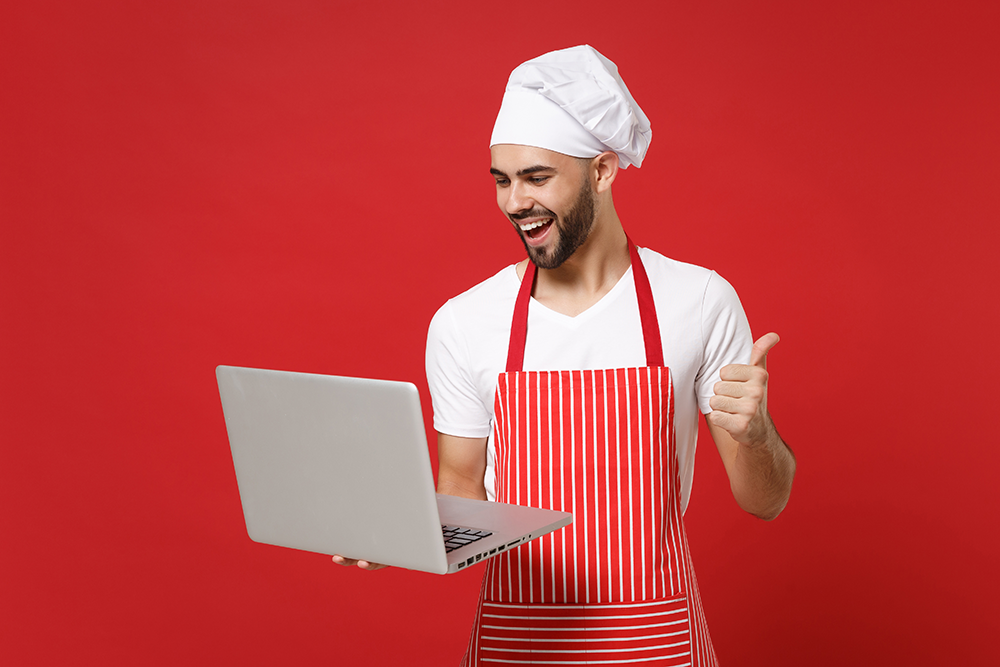
By Eric Tress, Contributor
Do you feel overwhelmed when juggling multiple social media pages for your restaurant? According to recent research, the average internet user uses 6.7 social networks in a month.
This means you can reach millions of people through social media marketing, which is why it is an essential aspect of running a business.
In this article, we’ll share tips on managing multiple social media accounts for your restaurant to maximize their benefits.
Benefits of Managing Multiple Social Media Pages

If you have one or two social media pages for your restaurant, you may wonder why you should have more. Juggling multiple social media pages for your business comes with several benefits.
- Ensures you deliver relevant content to specific groups of followers, and avoid overwhelming customers with content they are not interested in.
- Enables restaurateurs to highlight different aspects of their business when catering to diverse customer groups. For example, you may have separate social media pages on a platform like Facebook for corporate events or food safari tours from your restaurant.
- Allows you to strengthen your brand identity by advertising your services on social media apps, such as Instagram, TikTok, and Facebook, to reach a wider audience.
Challenges of Juggling Multiple Social Media Pages
Juggling multiple social media pages comes with challenges.
- Time: It is difficult to find enough time when running a busy restaurant to prepare engaging content to post on multiple social media accounts.
- Consistency: Social media engagement on online platforms fluctuates; therefore, you must find ways to consistently achieve excellent results across all accounts. This is not always easy, especially for restaurant managers with little knowledge of increasing brand awareness on social media.
- Resources: Managing multiple social media pages requires extra resources such as creativity, time, and money, which you may not always have enough of.
8 Tips to Help You Juggle Multiple Social Media Pages for Your Restaurant

1. Identify Your Social Media Goals
There are many social media platforms you can use to promote your food and services on social media. Some examples are Twitter, Facebook, Instagram, LinkedIn, Tumblr, and TikTok.
However, to achieve great results, you must identify your goals. Are you looking to increase website traffic? Build brand awareness? Drive sales?
Additionally, identify your target audience, and then match your goals to the platform’s strengths:
- Quick updates: Twitter
- Eye-catching visuals: Instagram, TikTok
- Community building: Facebook
By focusing on a few key platforms and tailoring content to their strengths, you’ll maximize your social media impact.
2. Develop a Content Creation Plan
You can simplify your social media strategy by creating a content creation plan. This will help you decide the type of content to post on your social media pages and when to post it. For example;
- On Mondays, post engaging videos of events in your restaurant on Instagram, TikTok, and Facebook to show people what happened during the weekend. This will increase visits to your restaurants during the week.
- Share captivating images of mouthwatering foods on your menu at least once daily to attract the lunch or dinner crowd.
- Chat with your followers on social media accounts like Facebook on popular days like weekends when people are looking for places to eat.
- Retweet insights from industry professionals to create a profitable network with valued experts in your industry.
- Promptly respond to messages and comments from your followers on each social media platform to increase engagement and create a sense of community.
3. Have a Crisis Management Strategy
Your restaurant may face a crisis, such as food poisoning, which will require effective use of social media accounts when handling the situation.
It may be challenging to juggle multiple social media accounts during a crisis. You can make things easier by:
- Create an online crisis management team of trusted social media reps to handle communications on the crisis.
- Communicate one message on all your social media platforms to give your audience consistent information about the crisis.
- Be honest about details of the crisis, such as how the food poisoning incident occurred and how you are dealing with it.
- Stay ahead of a restaurant crisis on social media by remaining proactive and ensuring any crisis updates are coming from you and not outsiders.
- Apologize for the crisis on all your social media platforms and tell your customers how you will handle the situation and avoid such incidents in the future.
- Contact a business lawyer in New Jersey for help if your food poisoning crisis results in a lawsuit.
4. Get Inspiration from Competitors
Conduct competitive research by studying how other restaurant owners are using social media pages and follow in their footsteps.
Look at popular posts on their pages and create similar posts on your social media pages with an exciting twist.
If your posts are fascinating enough, you will achieve good engagement levels.
5. Focus on a Few Key Platforms
While you can use many social media apps to communicate with your clients online, it’s best to focus on a few platforms. Determine which platforms to focus on by deciding what you want to achieve from your digital marketing efforts.
Does your business host many events, such as live bands and theme food nights? Facebook and Instagram are great places to post updates and connect with customers.
TikTok is an excellent place to post short clips of professionals in your restaurant practicing their craft, such as when cooking dishes that customers like, mixing drinks or celebrating customers’ special events, such as birthdays.
6. Analyze and Track Performance
Measure key performance indicators such as click-through rates and conversions to determine which of your social media pages are performing well.
Reviewing your social media pages enables you to identify successful strategies and use them to get excellent results from your digital marketing efforts.
This approach will also help you recognize and improve underperforming social media pages by refining your message, optimizing your social media pages for higher ranking, and aligning yourself with your audience preferences.
7. Use Social Media Management Tools
It isn’t easy to post content manually on social media pages throughout the day while running a busy restaurant.
Use automation tools to streamline your social media efforts and manage tasks efficiently. For example, you can schedule bulk posts using tools like Hootsuite.
Virtual assistants and chatbots are helpful in replying to customer queries quickly, especially when resolving issues such as late orders from unhappy clients.
AI assistants are also invaluable when creating content for social media platforms because they offer templates and valuable content ideas.
8. Encourage Your Guests to Share Content
You don’t have to do all the social media marketing for your restaurant; ask your customers to share content about the food and service in your eatery.
When people read positive posts from customers who have good things to say about your restaurant, they will be more inclined to come in and have the same experience.
Such an approach is even more effective when user-generated content consists of customers sharing photos and videos of themselves having a good time in your eatery.
Final Thoughts on How to Juggle Multiple Social Media Pages
Successfully running social media accounts for a thriving restaurant business requires consistent effort. You must continuously refine your marketing strategies on social media to keep attracting more customers.
Create excellent content, interact with your customers online, and reshare their content when they mention your restaurant in their social media accounts. Ultimately, these approaches will help you successfully manage multiple social media pages.






